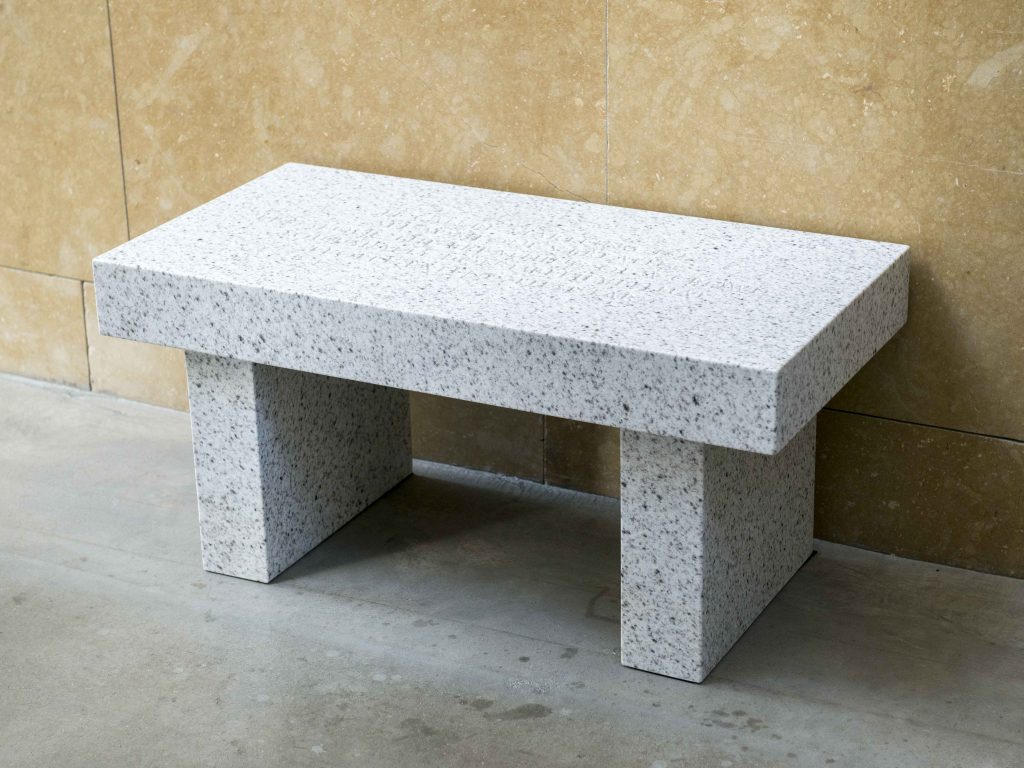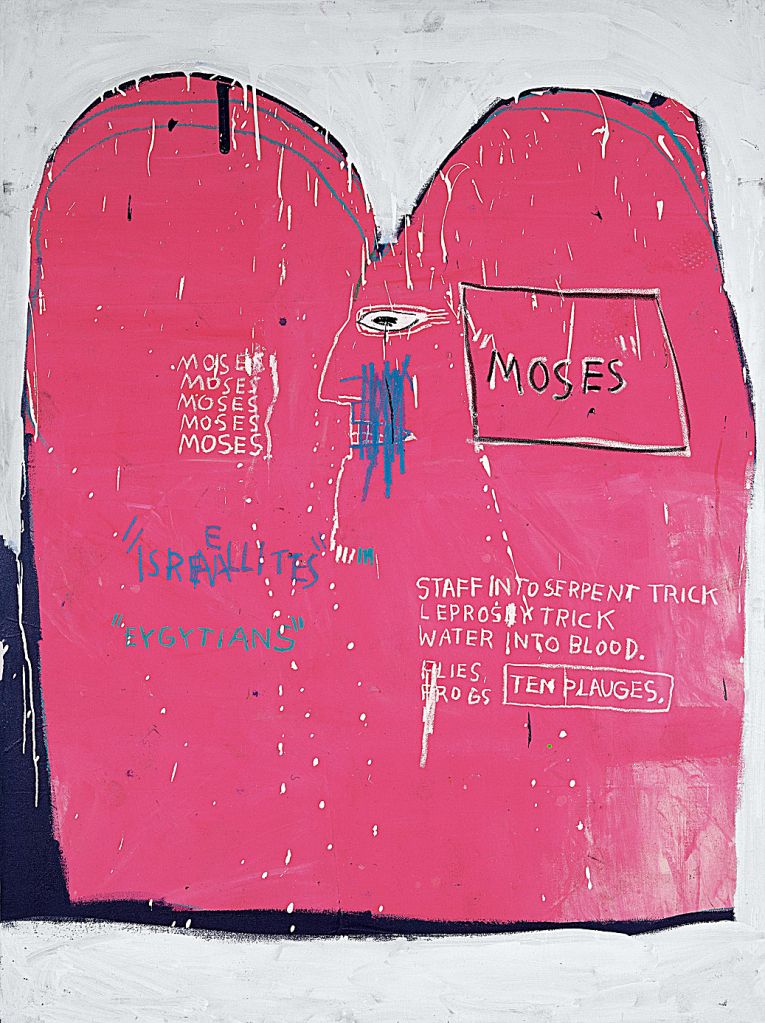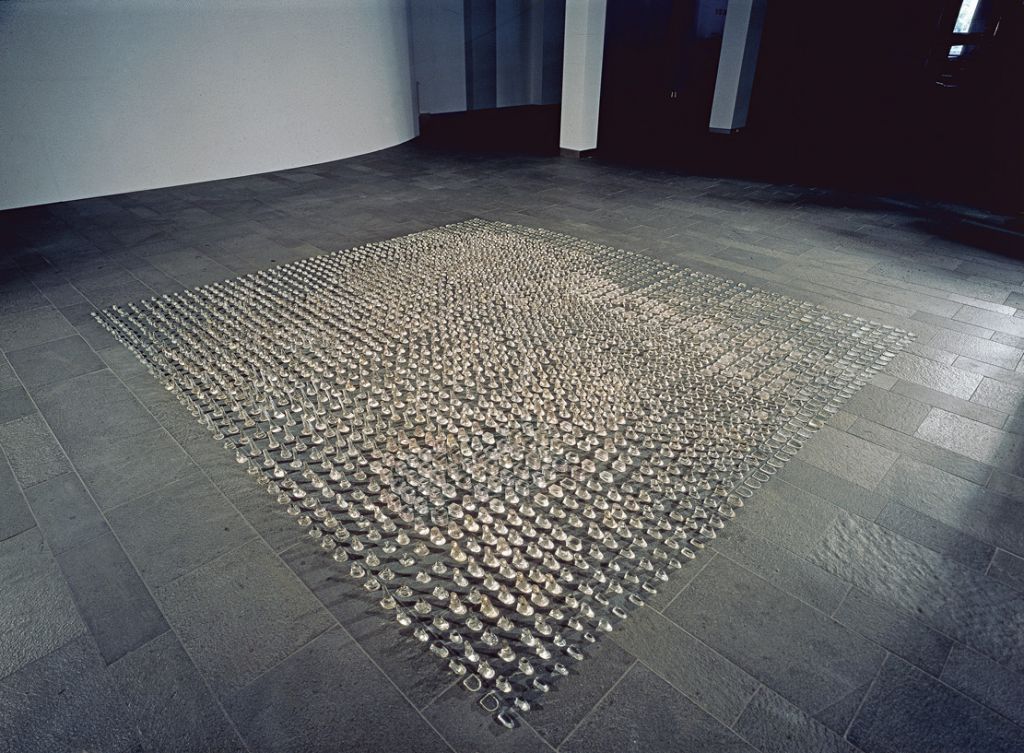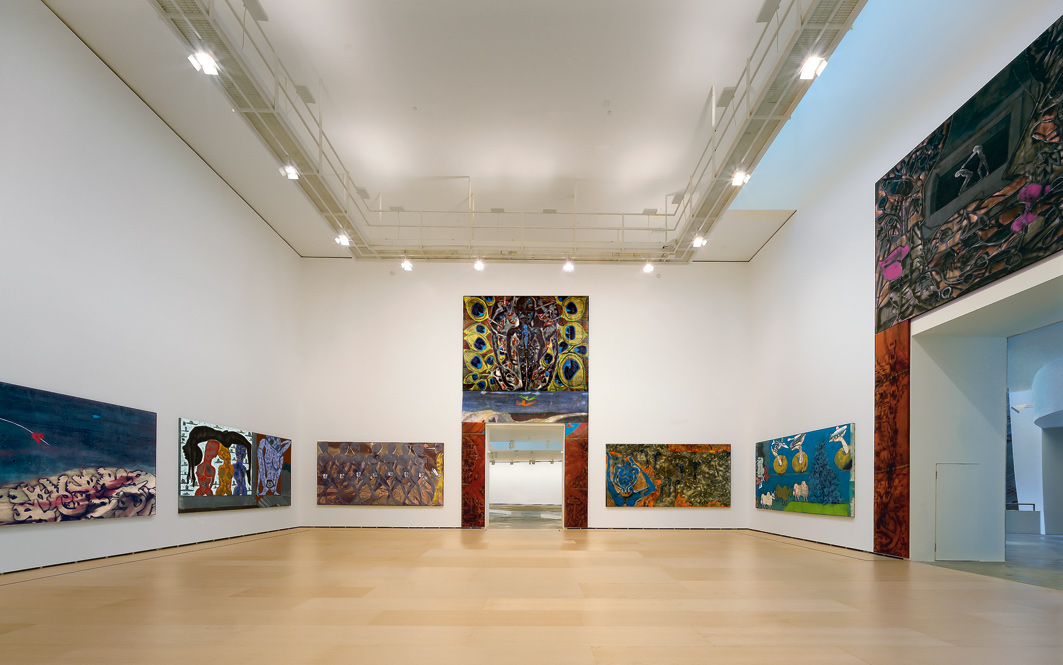Three Red Spanish Venuses
1997Expanded polystyrene on a steel structure, nylon mesh, and red acrylic latex finish940 x 1220 x 1240 cm
Jim Dine first came to prominence in the early 1960s, as part of a loosely affiliated group of artists who radically expanded the boundaries of art by extending the terms of Action painting into real space and time and utilizing everyday objects drawn from the street. Between 1959 and 1961 Dine played a key role in the development of environments and the performances that Allan Kaprow dubbed "Happenings," collaborating with Claes Oldenburg, among other artists. Subsequently, under the influence of Robert Rauschenberg and Jasper Johns, he began producing paintings on canvas that incorporated readymade objects such as tools, articles of clothing, and bathroom fixtures. While such works were immediately seen in relation to Pop art, they were quite distinct from the cool, depersonalized production of artists like Andy Warhol. From the beginning, Dine gravitated toward objects and images laden with symbolic—frequently corporeal—associations: for example, an empty men's bathrobe adapted from an advertisement functioned as a coded self-portrait. Moreover, Dine transformed such objects and images through expressive paint handling, turning them into vehicles of personal expression.
Together with the bathrobe, the heart, tools, and Pinocchio, a headless Venus de Milo has become one of Dine's signature, repeated motifs. It first appeared in 1982, when the artist decided to transform a small, store-bought plaster replica of the famous Hellenistic sculpture. After removing the figurine's head and reworking its surface by scratching and scraping into it, he ordered an enlargement in clay; he further manipulated this resized copy and then cast it in bronze to produce Venus in Black and Gray (1983)—just the first in a long series of sculptures of widely varying materials, sizes, and groupings dedicated to the theme, of which the Guggenheim Museum Bilbao's Three Red Spanish Venuses (1997) is the largest and perhaps most ambitious. The motif has also appeared in numerous paintings, drawings, and prints by the artist.
The Venus series reflects Dine's sustained engagement since the 1970s with an older artistic tradition, and in particular his deep interest in antiquity, equally evident in a series of drawings after ancient Greek and Roman sculptures in museum collections, which he began in the mid-1980s. While his multiple variations on the Venus de Milo inevitably evoke the endless reproduction, commodification, and kitsch debasement that the iconic sculpture has been subjected to since its recovery from the isle of Melos in 1820, this is ultimately more a background to the artist's project than its focus. By decapitating and otherwise altering its famous armless, partially draped form, Dine transforms the Venus de Milo into a less specific and more universal, archetypal figure. Moreover, however much he repeats the motif, no two of his Venuses are identical. Although the three figures in Three Red Spanish Venuses at first appear to be indistinguishable, closer examination reveals subtle differences between the cubistically rendered bodies. Specially commissioned for one of the soaring atriums of the Guggenheim Museum Bilbao's Frank Gehry building, this imposing group loosely evokes such art-historical themes as the Judgment of Paris and the Three Graces.
Source(s): Ted Mann. "Jim Dine." In Guggenheim Museum Bilbao Collection. Bilbao: Guggenheim Museum Bilbao; Madrid: TF Editores, 2009.
Original title
Three Red Spanish Venuses
Date
1997
Medium/Materials
Expanded polystyrene on a steel structure, nylon mesh, and red acrylic latex finish
Dimensions
940 x 1220 x 1240 cm
Credit line
Guggenheim Bilbao Museoa






